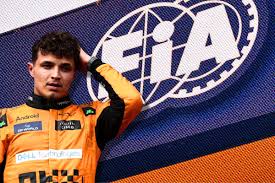“Hamilton’s Disqualification Sparks Calls for FIA Rule Change”with…read more
The disqualification of Lewis Hamilton from the Chinese Grand Prix has ignited intense debate regarding the FIA’s technical regulations. The seven-time world champion was disqualified for having excessive wear on his car’s plank, which was found to be 0.5mm below the minimum thickness required by FIA’s technical standards. According to Article 3.5.9 of the FIA’s regulations, any violation of the rule mandates immediate disqualification, regardless of the severity of the breach.
However, many in the motorsport community are questioning whether such a harsh penalty is warranted for relatively minor infractions. Critics argue that these strict regulations fail to consider the potential for unintentional or minimal breaches. Former Ferrari driver Rene Arnoux, a key voice in the criticism, has called on the FIA to reconsider its approach, particularly for violations involving small infractions like skid block wear.
Arnoux, speaking to La Gazzetta dello Sport, stressed that there was no intent to cheat on Hamilton’s part. He suggested that if the irregularity had been more significant, such as a car being 10kg underweight, a disqualification could be justified. However, in the case of Hamilton’s disqualification, the issue was a slight deviation, which Arnoux deems to be a minor detail, likely accidental.
According to Arnoux, the FIA should adopt a more balanced and lenient approach when dealing with small infractions that do not materially affect the outcome of the race. He proposed the introduction of a warning system for minor rule breaches, allowing drivers and teams the opportunity to rectify these issues before facing penalties. Under this system, only those who repeatedly violate regulations would face severe penalties like disqualification or suspension.
“The punishment for Hamilton was too harsh,” Arnoux remarked, emphasizing the broader consequences of disqualification, which extend beyond just the team and driver involved. Disqualifications can have long-lasting effects on the championship standings, influencing not only the involved team but also the overall competition. Arnoux’s proposal includes creating a margin within which minor irregularities could be tolerated without an immediate penalty. A first violation would result in a warning, while a second breach would trigger an official sanction.
The disqualifications of Hamilton, as well as other high-profile drivers like Charles Leclerc and Pierre Gasly, have prompted further discussions on the FIA’s regulatory practices. These incidents underscore the potential drawbacks of such rigid rules, particularly in cases where the violations are not deliberate or significantly impactful. Many argue that such regulations create unnecessary obstacles for teams and drivers, especially given the complexities involved in maintaining a Formula 1 car at the highest level of performance.
As the season progresses, it remains to be seen how the FIA will respond to these concerns and whether it will revise its approach to rule enforcement. The debate highlights the balance the governing body must strike between maintaining fairness and consistency while avoiding excessive penalties that could detract from the integrity of the sport. Reforming the rules could help create a more flexible system, ensuring that penalties are applied in a way that reflects the true nature of the violation and its impact on the competition.
Ultimately, the goal of any sporting regulation is to protect fair play and ensure a level playing field. As the Formula 1 community continues to debate the future of FIA rule enforcement, a more nuanced and proportional approach could contribute to a more balanced and exciting competition for both drivers and fans.



